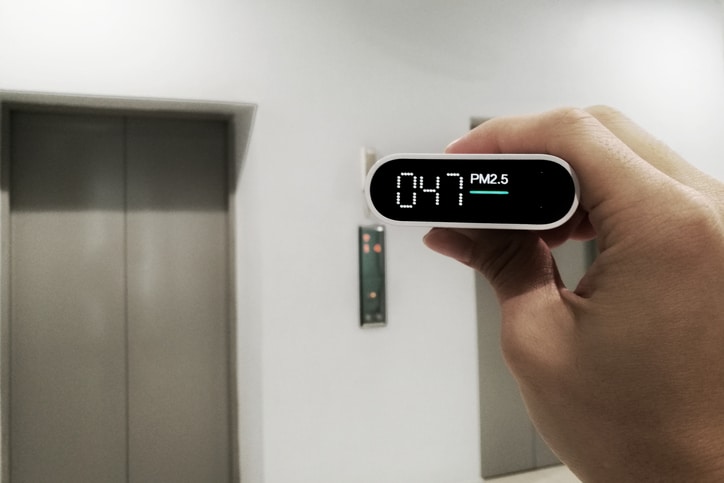Most of us spend most of our time indoors, so it’s important to make sure that the air we’re breathing is clean and healthy. Unfortunately, indoor air can often be more polluted than outdoor air, due to a variety of factors such as poor ventilation, off-gassing from building materials, and indoor pollution sources such as mould, dust mites, and cleaning chemicals.

Poor indoor air quality can lead to a variety of health problems such as headaches, dizziness, fatigue, respiratory infections, and even cancer. It’s especially dangerous for young children, the elderly, and those with chronic respiratory conditions such as asthma or allergies. That’s why it’s so important to do hazardous materials assessments, and monitor indoor air quality. That way, you can take steps to improve it if necessary.
Here, we will dive a little deeper into why indoor air quality matters, and how best to monitor it. Whether you’re in a commercial space, or worried about the air quality in your home, here’s a few things that are important to know about indoor air quality.
The Importance of Indoor Air Quality
Since we spend so much of our time indoors, it’s vital to our health to ensure the air we breathe is pure, clean, and uncontaminated. With dust and pollutants becoming constantly trapped within our living or work spaces, gone unchecked this air can decrease in quality and even make us sick or lead to chronic illness.
Pollutants in our outdoor environments are already at an all time high; that’s why it’s imperative to ensure that your home or work space is clear of chemicals, carbon monoxide, carbon dioxide, nitrogens, and other harmful pollutants.
How to Measure Indoor Air Quality
There are a few different ways to monitor indoor air quality. The most common method is to use an air quality monitor. These devices measure various pollutants in the air and give you a reading that you can use to gauge the overall quality of the air in your home or office. Air quality monitors are relatively inexpensive and easy to use, making them a great option for most people.
Another way to monitor indoor air quality is to have your home or office tested by a professional. This is usually done with a device called an IAQ metre, which measures things like carbon dioxide levels, humidity, temperature, and VOCs (volatile organic compounds). Professional testing can be more expensive than using an air quality monitor, but it can be helpful if you’re trying to identify a specific problem with your indoor air quality.
Conclusion:
Indoor air quality is important for our health and well-being. There are a few different ways to monitor indoor air quality, including using an air quality monitor, hiring a hazardous materials consultant, or having your home or office tested by a professional. By taking steps to improve indoor air quality, we can help protect ourselves and our families from the harmful effects of pollution.
Alberta Safety & Environmental Services (ASE Services) is one of the most reputable providers of Hazardous materials assessment and hygiene inspection services—including asbestos, lead, mould, mercury, and silica detection, as well as industrial hygiene testing for grow ops and other facilities.
With a background in Alberta’s Occupational Health & Safety Commission and professional project management skills, our qualified staff can provide reliable handling of air quality and industrial hygiene from initial industrial inspection all the way to remediation programs. Whether just for a permit, or in-depth air quality control, we can help. Feel free to reach out and secure air quality and hygiene requirements for your building.
